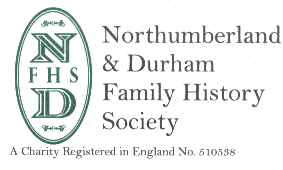 Reports
Reports

|
South Tyneside Meeting - March 2002"A Chemist at Swan Hunters" by Bob MattimoreA Report by Margaret Stafford |
Back to last night, some of you might have been thinking "what has being a chemist in the shipyards got to do with family history "? Strictly speaking "not a lot" but Bob Mattimore's talk gave a glimpse of an industry many of our ancestors will have been part of and reminded us of some of the great days of ship building and its impact in the area. It helped his cause that he immediately "came out" and confessed to having been born in Shields and several of the group of 22 of us could recall his grandfather's pork shop near Tyne Dock.
Bob worked as a chemist in the early 1960s and 70s in the ship building and ship repair yards of Swan Hunter moving from the Gas Board. Swan's so dominated the Tyne it was known as the "Swannee" river!
At first the workers would ask him if he was the man who gave out the aspirin but it soon became clear how vital a role the chemist played. Health and safety knowledge was in its infancy, the North East still in the grip of the "macho" culture where money and the payment of bonuses was often more important than taking safety precautions.
Giving out gas certificates was the bread and butter of his job, confirming the ships tanks were safe to work in and clean out. Up to the late 1950s the way this was done was for a labourer or trainee chemist to climb down into the tank carrying a bottle of water with a cork in, hold his breath, open the bottle, pour out the water, capture the atmosphere and then sprint back to the deck so the air in the bottle could be tested for breathability and fresh air taken into the lungs!
An amusing picture - until you realised men died doing this, poisoned by the gases they were trying to capture. Each of the quarter million tankers built in the yards claimed at least one life. Men continued to show limited concern for safety. The chemist's role was to highlight the risks and find better ways to deal with them.
Bob also had to learn the language of ships - no, not bad language, but phrases like "fiddly head", "cross bunker" and "double bottoms"! I was particularly taken by the idea of sacrificial anodes!
Issuing gas certificates was boring so he branched out into the areas of occupational hygiene. Fumes, atmospheres, asbestos and noise evaluation became important and from being the only chemist in the yards in 1967 by the 1970s there were 4 or 5.
Ships still needed their gas free entry certificates and Bob could be called on at any point of day or night. He had photos and slides to help those of us with a non-technical or shipping background, including one of the explosimeter (that probably is not the right spelling!!) which replaced the man with the bottle of water.
There was a photo of the RMV Gothic, built at Swans, which not only served as a troop ship but also as the royal yacht when the Britannia was not available, allowing Bob to claim he had worked for royalty!
When the Oregis was grounded on the Black Midden rocks at the mouth of the Tyne (and many could remember this) it had to be certified as gas free each day for safety purposes whilst awaiting the next spring tide to re-float. Climbing up to the ship proved a great problem - solved by the lowering of the lifeboat from the deck to work as a "lift" to enable Bob to carry out the task.
Bob had anecdotes galore. The crew of a foreign tanker which had had an explosion caused by the vapour in the tanks were only concerned to know how quickly they could smoke so the ship was manoeuvred to catch the breeze to enable them to smoke in safety rather than ignite the vapour.
Another crew had the name of their ship changed from the Homer (the blind prophet) because they insisted it was the ship to blame for a troubled journey including hitting an iceberg and colliding with another ship!
There was also the tale of the Esso Northumbria, a quarter of a mile long and 300 yards wide. Whilst berthed in the Tyne there was a huge rumble and sound of explosion one day and much dust. It turned out the black paint applied to the vessel had been manufactured for use in kinder climates and its application in the Tyne in November had proved too much - all a quarter of a mile of it had simply fallen off!
It was re-applied with the ship sheathed in polythene and heated but Bob never did discover if it remained in place.
His most unusual job was trying to convince the owners in Chile that a vessel on the Tyne was badly in need of a new tail shaft. The owners were sceptical. A family member had been having some dental work done and inspired Bob to buy 2 stones of dental impression powder and make a mould of the damage and send it to Chile. The repairs were authorised!
Bob left the shipyards in 1975 for a job in health and safety with Sunderland council where one of his claims to fame is that he came to my office to tell us about the requirements of the legislation. My lingering memory of him? He taught me how to put out a fire in a dustbin - a useful skill I have never yet had to put into practice, thank goodness but a welcome diversion from work!!